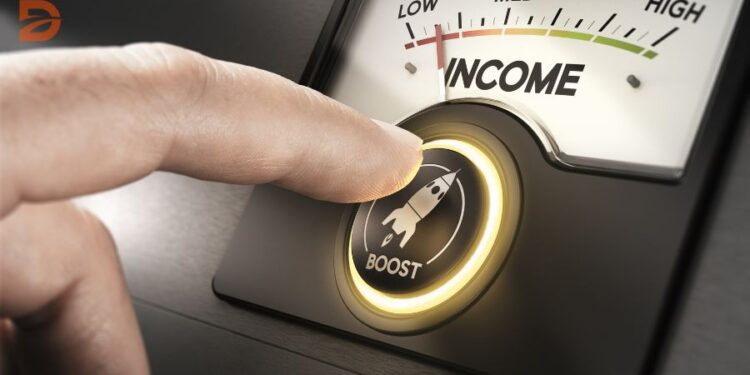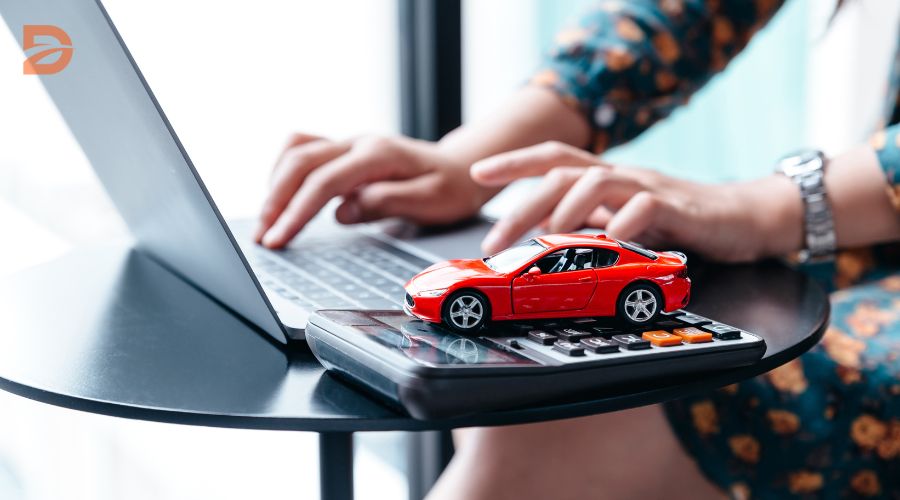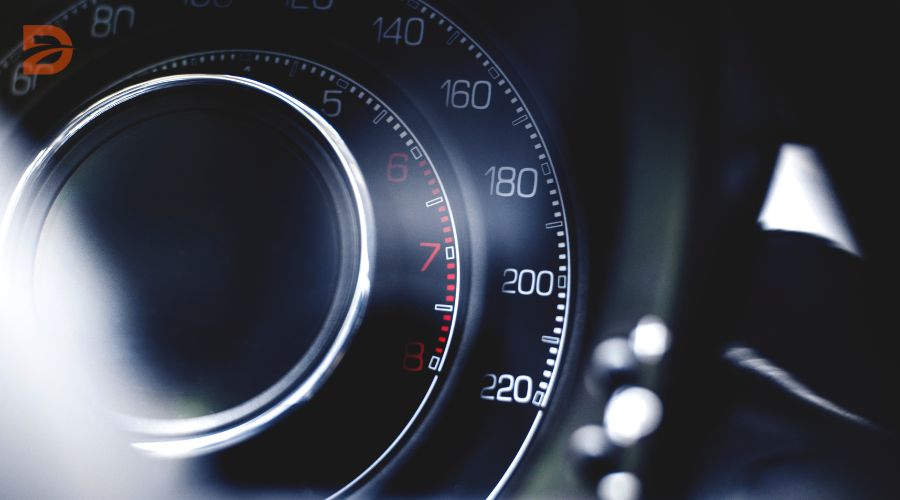In today’s fast-paced world, maximizing the value of your vehicle is crucial when considering a trade-in or private sale. But what if you could boost your car’s worth and get the best return on your investment? The secret lies in addressing mechanical issues, enhancing the appearance, reducing mileage, and maintaining detailed records. Are you ready to unlock the true potential of your vehicle and drive away with a higher price tag?
Key Takeaways
- Proper maintenance and upkeep can significantly increase a car’s resale value.
- Investing in new tires and keeping detailed service records can add value to your vehicle.
- Driving safely and avoiding abuse can prevent devaluation and maintain a higher resale value.
- Researching the market and timing the sale can help you achieve the best price for your car.
- Thoroughly cleaning and documenting your vehicle’s history can enhance its value.
Address Mechanical Issues
Maintaining the mechanical condition of your vehicle is crucial when preparing for a trade-in. By addressing any known problems, you can significantly increase its value and appeal to potential buyers. Resolve any clear mechanical problems, such as issues with the engine, transmission, or suspension, to ensure your car is running smoothly and reliably.
Stay Up-to-Date on Recalls
Keeping your vehicle up-to-date on safety recalls is another important step in maintaining its condition. Address any outstanding recalls to demonstrate your commitment to improving automotive reliability and maintaining vehicle condition. This small step can go a long way in boosting the perceived value of your car.
In addition to resolving mechanical issues and addressing recalls, it’s essential to keep detailed maintenance records. Potential buyers will be more inclined to trust a vehicle with a well-documented service history, as it shows you’ve taken care of your car over the years.
“74% of potential buyers are more interested in a used vehicle with a documented service history.”
By taking the time to clear up any mechanical problems and stay up-to-date on recalls, you can significantly improve the overall value and appeal of your vehicle when it’s time to trade it in.
Enhance Appearance
Once you’ve addressed any mechanical concerns, it’s time to focus on improving the overall aesthetics of your vehicle. A well-cleaned and meticulously maintained car can significantly boost its perceived value and appeal to potential buyers. Experts suggest treating the process like a real estate agent staging a home – clear out any loose items, vacuum the interior, and give the exterior a thorough wash.
Investing in protective treatments, such as ceramic coatings or paint protection film, can safeguard your vehicle’s finish and maintain its showroom-quality appearance. Regular interior detailing can eliminate dust, dirt, and clutter, ensuring your car’s cabin looks and feels refreshed. By keeping up with routine maintenance, you can catch minor issues before they turn into major repairs, ultimately preserving your vehicle’s value.
- Invest in protective treatments like ceramic coatings or paint protection film to preserve the vehicle’s finish
- Regularly detail the interior to eliminate dust, dirt, and clutter for a refreshed cabin
- Maintain the vehicle according to the manufacturer’s recommendations to prevent minor issues from escalating
A well-maintained vehicle not only performs better but also gives sellers a competitive edge in the resale market. Potential buyers will appreciate the care and attention you’ve given to your car, potentially leading to quicker sales and higher trade-in values.
Boost vehicle value
Maintaining your vehicle’s value is crucial, whether you plan to keep it for years or sell it in the near future. Two key factors that can significantly impact your car’s worth are reducing vehicle mileage and keeping detailed service records.
Reduce Mileage
High-mileage vehicles tend to depreciate faster, so minimizing your annual mileage can help preserve your car’s value. Consider combining errands, carpooling, or using alternative modes of transportation to reduce vehicle mileage and maintain a lower overall odometer reading.
Keep Maintenance Records
Maintaining detailed service records and receipts demonstrates that you’ve properly cared for your vehicle. This can give potential buyers peace of mind and increase your car’s perceived worth, ultimately maximizing its resale potential. Be sure to maintain detailed service records and keep all documentation organized.
| Factors Impacting Vehicle Value | Impact on Resale |
|---|---|
| Mileage | Higher mileage leads to faster depreciation |
| Maintenance History | Well-maintained vehicles attract higher offers |
| Exterior and Interior Condition | Well-kept cars command better trade-in values |
| Make, Model, and Year | Popularity and demand impact market value |
“A well-maintained car is likely to attract buyers who are willing to offer a higher price.”
Prepare for Trade-In
When the time comes to trade in your vehicle, preparation is key to getting the best possible offer. Start by gathering all the necessary documents, including your vehicle’s registration, title, and any competitive quotes or estimates you’ve received. Knowing your numbers and being prepared to negotiate can help you navigate the trade-in process with confidence.
One important step is to research the fair market value of your vehicle. Factors like mileage, condition, and demand for your make and model can all impact the trade-in offer you receive. Armed with this information, you’ll be better equipped to negotiate a fair price.
- Gather your vehicle’s registration, title, and any maintenance records.
- Research the fair market value of your vehicle using online tools or by consulting local dealers.
- Prepare to negotiate the trade-in value and the cost of your new car separately.
Remember, the trade-in and the purchase of a new car are two distinct parts of the transaction. By handling them separately, you can maximize your leverage and ensure you get the best possible deal on both ends. With the right preparation and a willingness to negotiate, you can increase the value of your trade-in and drive away in a new vehicle with a smile.
| Statistic | Value |
|---|---|
| Vehicles depreciate up to 20% when leaving the dealership | 20% |
| Vehicles depreciate up to 30% in the first year of ownership | 30% |
| Specific car models can depreciate up to 65% in the first three years | 65% |
| Average yearly mileage put on a vehicle | 12,000 – 15,000 miles |
| Reduction in vehicle value for every $5,000 in accident repairs | $2,500 |
| Vehicles graded as “Fair” condition by appraisers | More than 80% |
By understanding these key statistics and preparing thoroughly, you can maximize the value of your trade-in and negotiate a fair deal when it’s time to purchase your next vehicle.
Understand Depreciation
Understanding vehicle depreciation is crucial when it comes to maintaining your car’s value. Factors like mileage, age, make, and model can all contribute to the rate at which your vehicle’s worth declines over time. As a general rule, high-mileage vehicles and older models tend to lose value more quickly, while more popular makes and models may hold their worth better.
Mileage and Age Impact
The average American drives around 11,000 miles per year, and this accumulated mileage can significantly impact a car’s depreciation. New vehicles typically lose about 9% of their value just by being driven off the lot, and continue to depreciate at a rate of 20% in the first year and 60% over the first five years. Following a vehicle’s maintenance schedule can help slow this process and maintain its value.
Make and Model Popularity
The popularity of a car’s make and model also plays a role in its depreciation rate. Vehicles with a strong reputation for reliability, like the Toyota Tacoma and Porsche 911, tend to hold their value better than less popular models. Conversely, luxury cars often depreciate faster than mainstream brands, as do vehicles with ample supply, like full-size pickup trucks. Researching depreciation rates before making a purchase can help you make an informed decision and maximize your vehicle’s resale value.
FAQ
How can I increase the value of my vehicle?
To maximize your vehicle’s value, you should address any mechanical issues, enhance the appearance, reduce mileage, maintain detailed service records, and prepare thoroughly for the trade-in or sale process.
What should I do to address mechanical problems?
Resolve any known mechanical issues and ensure your vehicle is up to date with any safety recalls. Keeping maintenance receipts is also crucial to demonstrate that you’ve properly cared for the car.
How can I enhance the appearance of my vehicle?
Treat the process like a real estate agent staging a home – clear out any loose items, vacuum the interior, and give the exterior a thorough wash. A well-maintained and clean car can significantly boost its appeal and perceived value.
What factors can help boost my vehicle’s value?
Reducing your annual mileage and maintaining detailed service records can help preserve your car’s value. High-mileage vehicles tend to depreciate faster, while well-documented maintenance can increase the perceived worth of the vehicle.
How should I prepare for a trade-in?
Gather all the necessary paperwork, including your vehicle’s registration, title, and any competitive quotes or estimates you’ve received. Knowing your numbers and being prepared to negotiate can help you get the best possible trade-in offer.
How does vehicle depreciation impact my car’s value?
Factors such as mileage, age, make, and model can all contribute to the rate of depreciation. High-mileage vehicles and older models tend to lose value more quickly, while more popular makes and models may hold their value better. Understanding these trends can help you make informed decisions about when to trade in or sell your vehicle.











